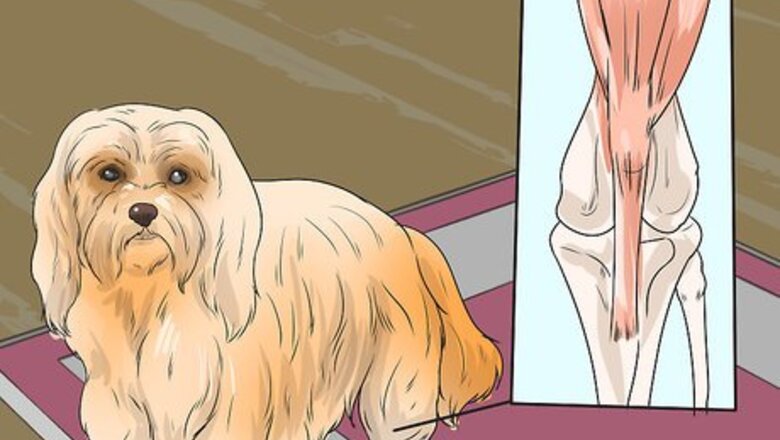
views
X
Research source
The patella is the technical name for a kneecap, and luxation simply means sliding out of place. This condition is also known as sliding or floating kneecaps. Learn how to diagnose patellar luxation in Shih Tzus so you can get your pet proper treatment.
Recognizing the Symptoms of Patellar Luxation
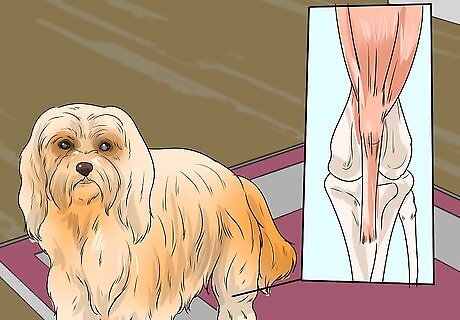
Look for skipping on the back leg. A typical sign of patellar luxation is when the dog skips on a back leg. He may be perfectly mobile and not in pain, but every now and again he skips a step. He may also carry a back leg for several steps before putting it back down again. This is due to the mechanical locking of the knee joint due to the faulty anatomy. After a few steps, things tend to shake back into place and the dog continues to walk as normal. Patellar luxation occurs in the back legs. This means your dog may move all the weight into the front legs.
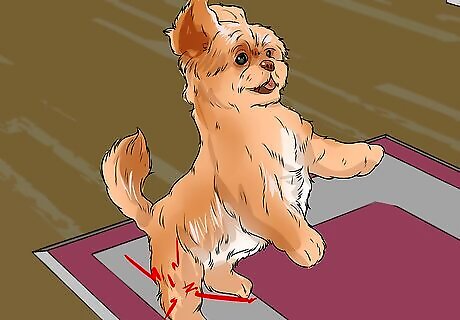
Watch for difficulty jumping. It is possible in some dogs for both legs to be affected by patellar luxation. If this is the case, the dog may look like he’s doing a bunny hop with both legs together. If your dog has the condition in both legs, he may have difficulty jumping up onto furniture or low surfaces.
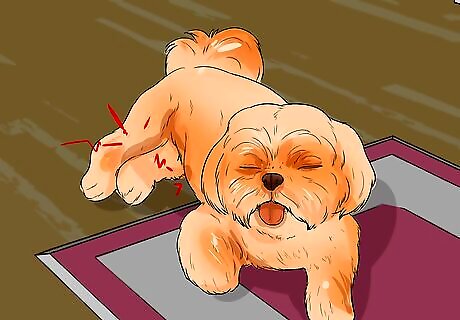
Monitor for other leg problems. In severe or long term cases, the dog may develop secondary problems. One secondary problem may be arthritis in the joint. There may be swelling or stiffness in the leg or joint. If the dog is using the leg less, he may also develop muscle wastage on that side, which means the muscles on the affected side will be smaller than the ones on the other side. Your dog may also exhibit lameness on the affected leg. Lameness means your dog won't have the ability to walk on that leg. Muscle wasting could be another issue that pops up.
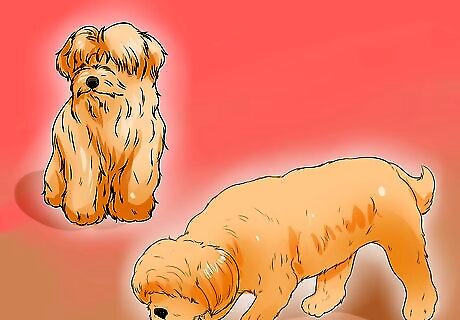
Recognize the symptoms at any age. A dog can get patellar luxation at any age. Many dogs often present symptoms as a puppy because it is a problem with the patella, which is composed of bone and stabilized by ligaments. Dogs can start presenting symptoms at eight to 10 weeks.
Diagnosing Patellar Luxation
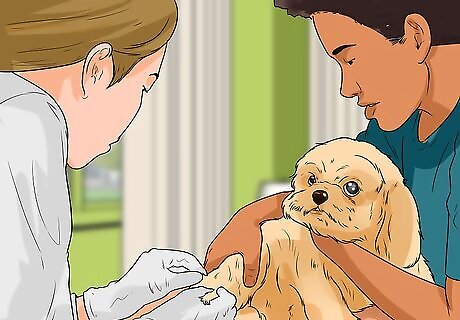
Get a physical exam. If you believe your dog has patellar luxation, you should take him to the vet. The vet can perform a physical exam to check for the condition. First, the vet will watch the dog walking and feel the back legs. The vet is feeling for muscle wastage, along with sideways movement in the kneecap that shouldn't be there. It is possible to diagnose a luxating patella by feel alone since the kneecap can be felt popping out of place when the leg is straightened during the exam. In cases that are not clear cut, the vet may straighten the leg and put a slight sideways pressure on the kneecap. This can be enough to encourage the patella to pop out of place.
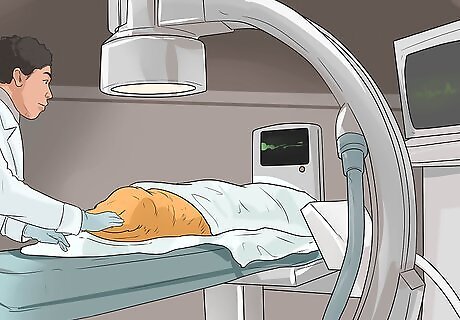
X-ray the leg. Even if the vet suspects a luxating patella from the physical exam, the leg will be x-rayed so as to fully assess the underlying anatomy. This is especially important if corrective surgery is being considered. The vet will want to look at the radiographs to check the angles of the bones, which gives essential information about what surgical procedures are most appropriate for that individual.
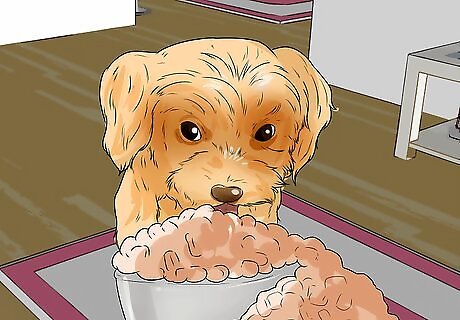
Manage the condition in mild cases. For mild cases of patellar luxation, you can manage your dog’s pain and inflammation with NSAIDs. Your vet will also give you a physical rehabilitation exercise program for your dog to help build strength in the thigh muscle. You should also control your dog’s weight. Added weight from obesity can put more stress on the knee joint.
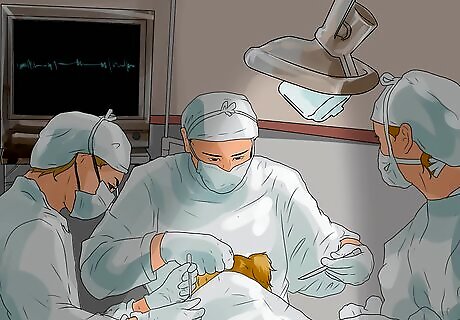
Undergo surgery in severe cases. In dogs that are regularly skipping a step or having difficulty jumping, this could indicate the changes are more marked, in which case corrective surgery could protect the joint from early arthritis. Corrective surgery involves deepening the groove that the kneecap sits in, tightening the joint capsule, and sometimes changing the angle of the shin bone so that the patella sits in a straighter line with the thigh bone.
Understanding Patellar Luxation
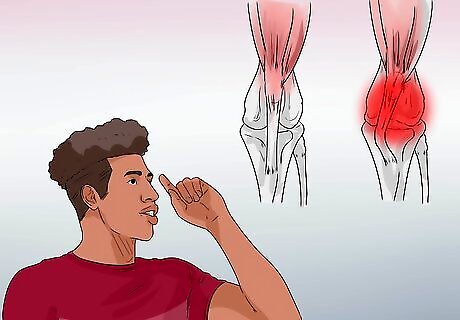
Know what patellar luxation is. The kneecap is a vital part of knee anatomy. The knee is a hinge joint made up of the femur, or thigh bone, from above and the tibia, or shin bone, from below. When the large thigh muscle contracts, it pulls on the shin bone and causes the knee to straighten. However, it does not pull directly on the shin bone but via a pulley system formed by the patella. For this system to work, the thigh muscle needs to pull in a straight line. What happens with a luxating patella is that the forces pull at an angle and the kneecap pops out of place. The problems which allow or encourage the kneecap to slip can vary. One problem is a slack joint capsule that means the kneecap isn't tightly anchored. Another is that the groove the patella sits in is too shallow, which allows sideways movement that shouldn't be there. The muscles may also pull at an angle because of the bowed natures of the dog's hind leg bones.
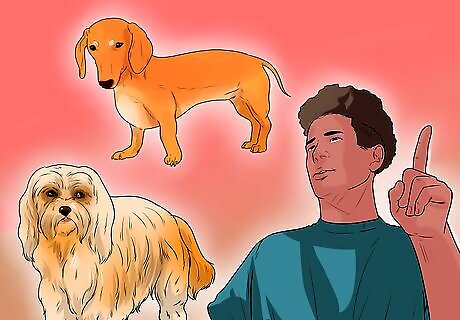
Determine if your dog is at risk. Small dogs are especially prone to luxating patellas. This means that the Shih Tzu breed is especially likely to have this condition. Patella luxation is common in dogs that have shortened legs or bowed legs, such as the dachshund, Lhasa apso, Yorkshire terrier, or Shih Tzu. Any age can be affected, but signs often show at a young age because this is a mechanical problem with the direction of pull of muscles and anatomy. Many dogs begin showing signs at eight to 10 weeks.
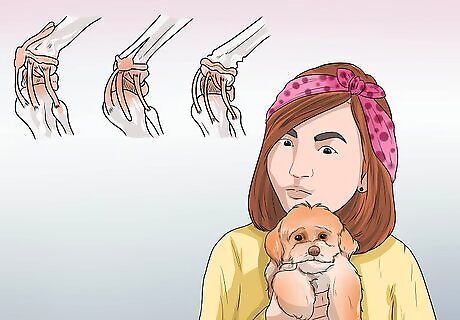
Understand that there are four grades of the condition. The severity of the condition is determined based on four different grades. The mildest case is considered a Grade 1 while the most severe is a Grade 4. Grade 1 is when the kneecap just pops out of place and returns naturally. Grade 2 is similar, but occasionally the kneecap needs help to manually pop it back in. Grade 3 is when the kneecap stops popping back into place on its own. The kneecap is popped out unless it is manually popped back in. It will only stay in place for a short while. Grade 4 is the most severe case. The kneecap stays popped out and won’t pop back into place even when manually moved.

















Comments
0 comment